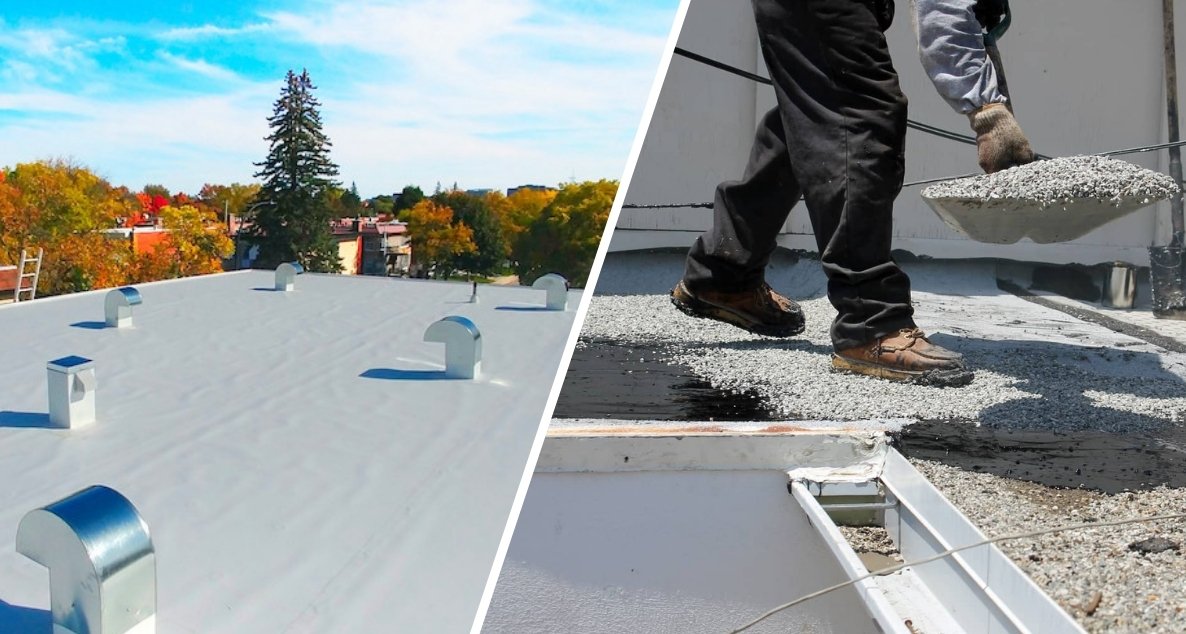
Home > Blog posts > All About the Differences Between a Flat Roof and a Traditional Roof
All About the Differences Between a Flat Roof and a Traditional Roof
Understanding the difference between a flat roof and a traditional roof is of great importance when it comes to constructing a new building. Whether you are building a residential, commercial, or industrial roof, each type offers unique features that will affect the cost, lifespan, and maintenance, not to mention the aesthetics of your project. A roof is a significant investment; make an informed choice!
What is a Flat Roof?
A flat roof is actually a roof with a very low slope, usually between 1 and 5 percent. They are designed with a slight incline that directs water towards a drainage system located in the center of the roof.
In Quebec, the use of this type of roofing dates back to the late 1800s, during the industrial revolution. This style was then inspired by the major British cities. Besides commercial and industrial buildings, flat roofs are adopted on residential buildings, especially in high-density urban areas like Montreal. Indeed, it was necessary to find a solution to accommodate thousands of new workers, and row houses with flat roofs became the norm.
The use of asphalt and gravel has long been the most popular, but different covering options have developed over the years. Today, flat roofs can be fitted with membranes like elastomer, TPO, or EPDM. The emergence of roof terraces and green roofs makes them even more attractive for modern buildings and homes.
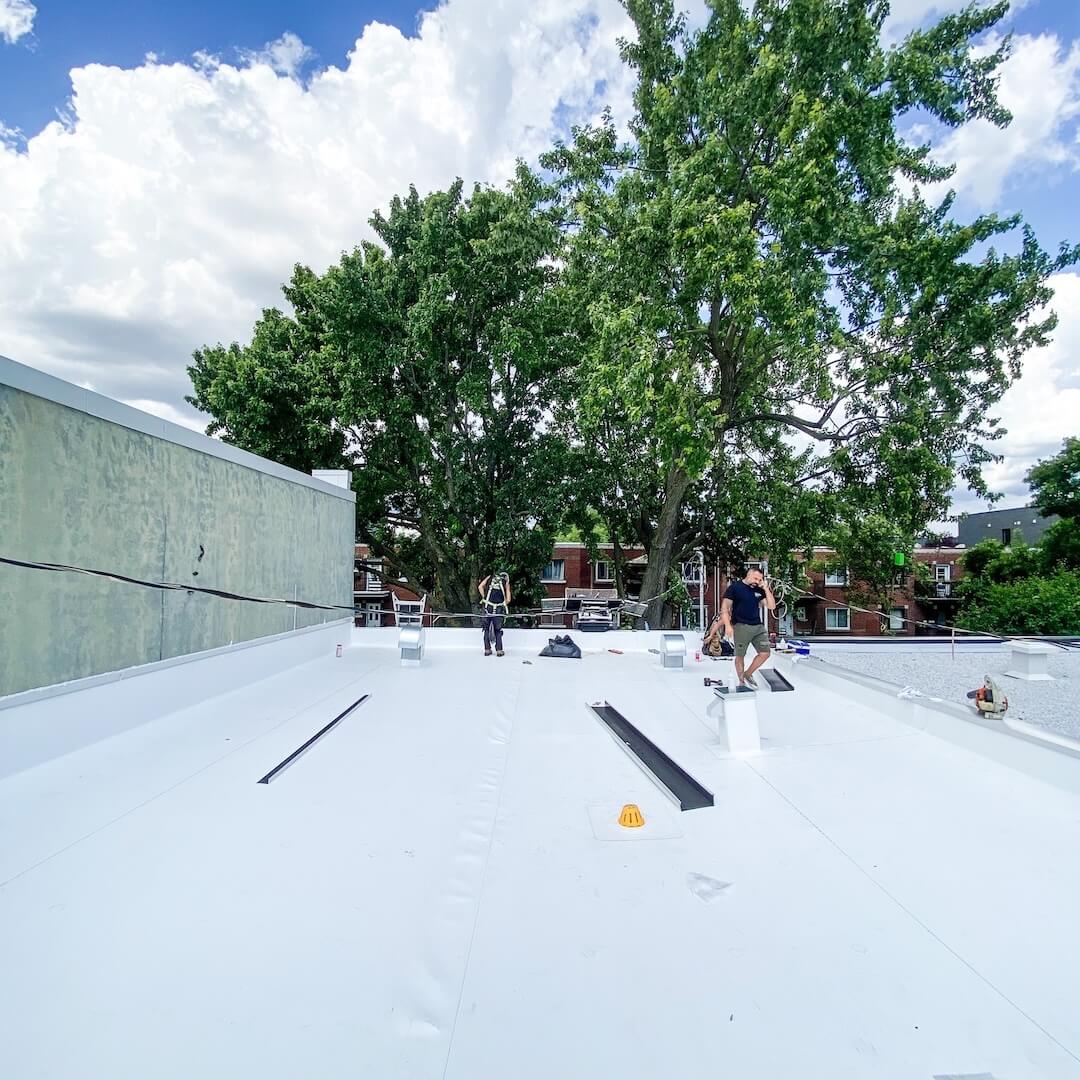
What is a Traditional Roof?
Also called a “sloped roof” or “pitched roof,” the traditional roof has a slope that is more or less steep. Generally, it is considered a sloped roof when the incline is 16.7% or more.
This design remains the most common for homes outside urban areas and comes in various shapes. In Quebec, the two-sloped or curved two-sloped roof is a style characteristic of traditional homes. The traditional roof has existed for millennia and has evolved according to local weather.
Common materials include asphalt shingles, very popular in North America, slate, metal roofing, as well as clay tiles, and several others. Each material is chosen according to its properties and depending on the slope of the roof.
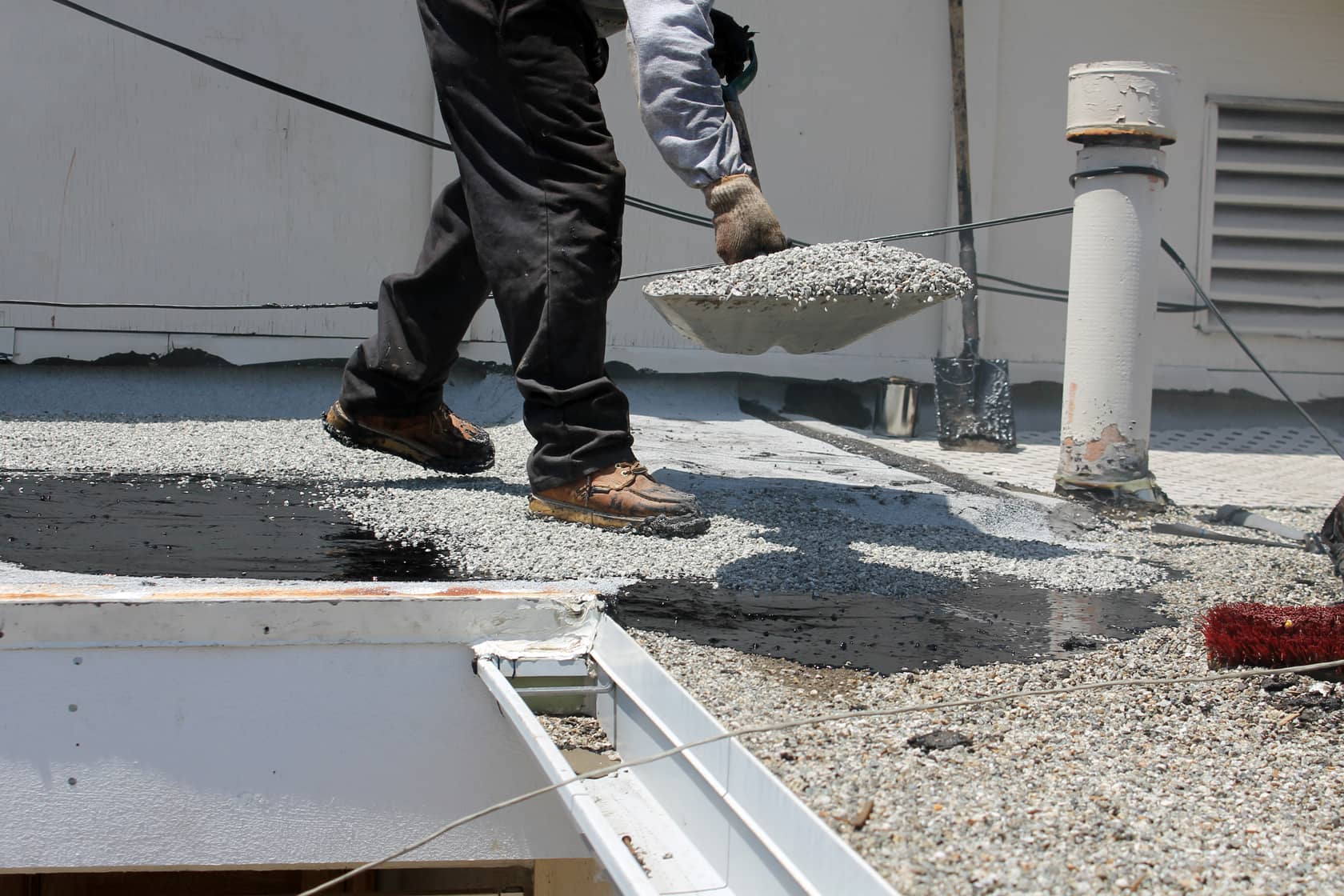
Comparison of Flat and Traditional Roofs
The differences between flat and traditional roofs each confer distinct advantages and disadvantages. Here are the main factors that might influence your decision on one side or the other.
Advantages of Flat Roofs
- Ease of Installation:
Flat roofs are generally easier and faster to install due to their design: roofers can move and work on them more easily, which greatly simplifies the work.
- Initial Cost and Maintenance:
The initial cost of a flat roof is often lower. This is especially true due to the ease of installation, but also because, for an equivalent building, the surface area to cover is smaller on a flat roof than on a sloped roof. Result: less material on the bill. Moreover, although regular maintenance is necessary, it is simpler and requires fewer interventions. Sloped roofs are often exposed to damage caused by winds.
- Space Usage (terrace, roof garden):
While flat roofs were first imposed for practical and safety reasons, they are now gaining popularity for the multiple possibilities they offer. Indeed, it is possible to install a terrace or even a vegetated roof with a garden on top. An option appreciated by businesses and individuals alike!
- Modern Aesthetic:
On a residential building, the flat roof brings a modern and minimalist style, very elegant. They are increasingly found on modern homes.
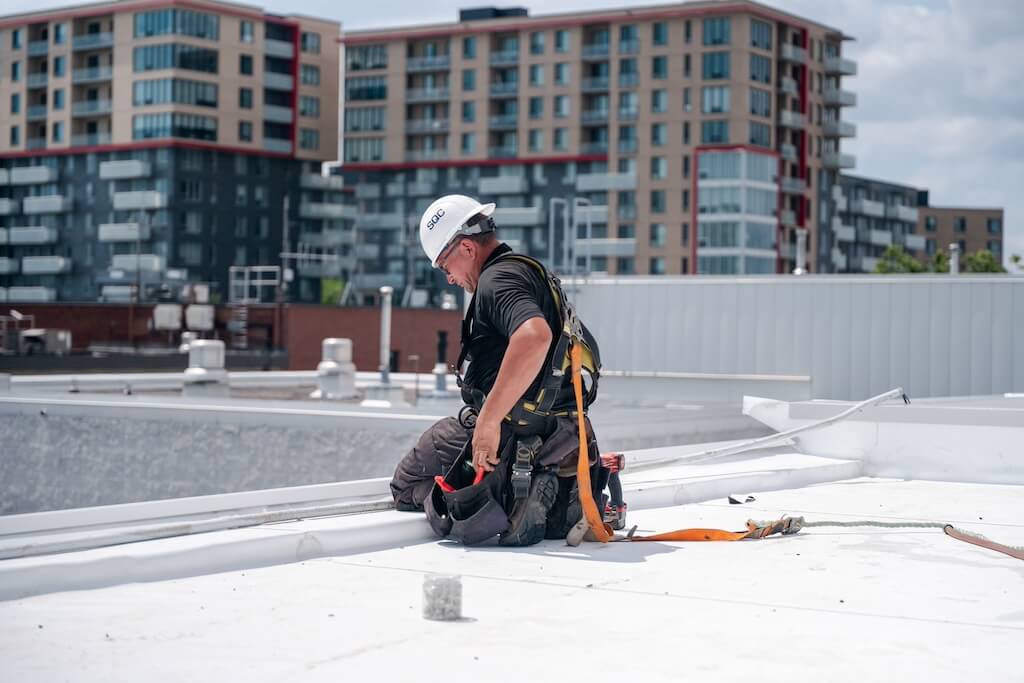
Disadvantages of Flat Roofs
- Durability and Longevity:
Although flat roofs are more economical to install, they tend to have a shorter lifespan, especially due to potential waterproofing problems. However, the lifespan of roofs varies greatly depending on maintenance and the materials chosen.
- Potential Waterproofing Problems:
Due to their low slope, these roofs are more vulnerable to rain accumulation, especially when the drain is blocked. Problems related to melting and freezing also make them more vulnerable in winter.
- Need for Regular Maintenance:
Maintenance is less costly, but it is more regular. To avoid drain blockages, infiltration, and leaks, a minimum of two inspections and maintenance per year are generally required, not to mention snow removal.
Advantages of Traditional Roofs
- Durability and Longevity:
Sloped roofs facilitate the evacuation of water and snow, reducing the risks of leaks and structural damage. With materials like metal roofing or natural slate, the roof can even last a hundred years.
- Energy Efficiency:
The space occupied by the attic allows the installation of thicker thermal insulation, reducing heat loss in winter to a minimum. You thereby minimize energy loss.
- Classic Aesthetic and Variability of Designs:
The possibility of playing with shapes and colors makes this type of roof attractive when it comes to creating a unique design. The traditional roof remains appreciated for its classic style.
- Fewer Waterproofing Problems:
As rainwater flows quickly, waterproofing problems are rarer and occur after a much longer period.
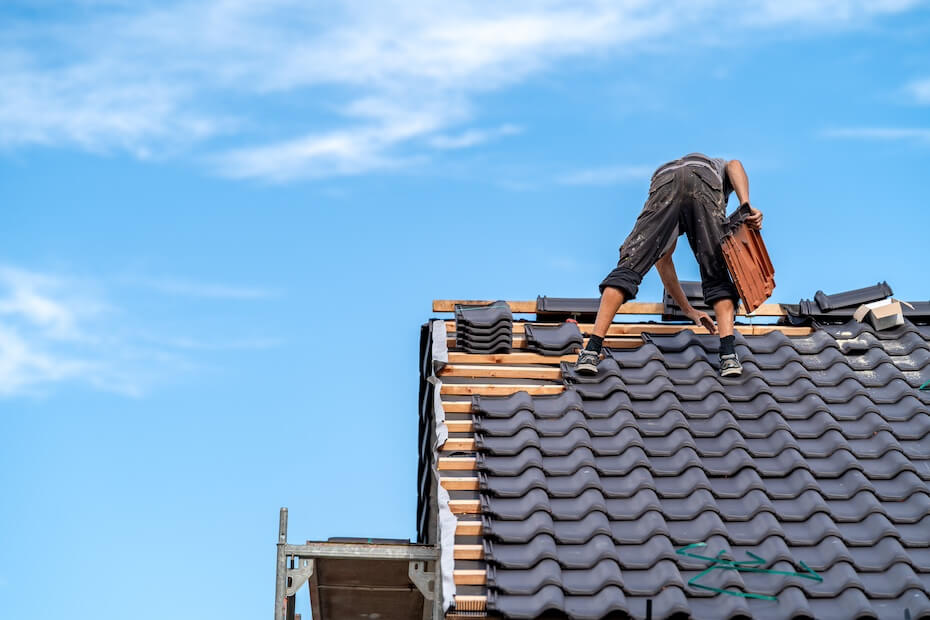
Disadvantages of Traditional Roofs
- Higher Initial Cost:
The complexity and duration of the installation, safety aspects, and the amount of materials required often result in a higher cost.
- Complexity of Installation:
Although styles, materials, and design are variable, this type of roof requires specific skills and more time. A heavy roof might also necessitate a robust frame.
- Less Usable Space on the Roof:
Unlike flat roofs, traditional roofs cannot accommodate special features like terraces or a garden. In urban environments where space is precious, this is a notable disadvantage for some.
Summary Table
|
Feature |
Flat Roof |
Traditional Roof |
|---|---|---|
|
Installation |
Easier and faster |
More complex |
|
Initial Cost |
Generally lower |
Higher |
|
Space Usage |
Numerous possibilities |
Limited or nonexistent |
|
Aesthetics |
Modern, minimalist |
Classic |
|
Lifespan |
20 to 30 years |
20 to 50 years, or more |
|
Energy Efficiency |
Variable depending on insulation |
Effective |
|
Maintenance |
More regular |
Less frequent, but more costly |

Pros and Cons of Each Flat Roof Material
Each flat roof also has different characteristics:
- Asphalt and Gravel
- Pros: Economical price, durability (with proper maintenance), easy to repair
- Cons: Heavy weight, ecological footprint, noisy installation
- Elastomer
- Pros: Resistance, durability, lighter alternative to asphalt and gravel
- Cons: Higher price, riskier installation (torch), sensitivity to standing water
- EPDM
- Pros: Eco-friendly, long lifespan, resilience
- Cons: Heat absorption, primarily black color
- TPO
- Pros: Superior resistance to cracks, breaks, and rays, reduces heat islands
- Cons: Installation requires expertise (sometimes at a higher cost), energy-intensive manufacturing
Takeaway
The differences between a flat roof and a traditional roof will influence your choice in various ways. The aesthetic question is often the first issue encountered; do you prefer a modern or more classic style? The uses of the roof, such as creating a roof terrace or a garden, are other possibilities to explore.
The flat roof offers great versatility, lower installation cost, and safety aspect. However, it requires regular maintenance and can be vulnerable to waterproofing problems.
As for the traditional roof, it is a bit more expensive but also more durable and often offers superior energy efficiency. However, it is more vulnerable to damage caused by wind.
Additionally, the different materials chosen can greatly vary the budget and properties of your roof! When making this decision, you will need to consider several factors:
- Durability
- Budget
- Functionality
- Style
- Environment
- Desired maintenance frequency
Making an informed decision can be challenging for individuals as well as businesses. To see more clearly, it is strongly recommended to seek personalized advice.
Call on our services for your flat roof at Clinique de la toiture, where our experts can provide you with tailored advice. We handle the construction, maintenance, replacement, and repair of flat roofs, offering a 360 service.
Don't wait any longer: ask us for a quote!
Get an estimate in just 2 quick steps!
*Please allow a minimum of 24 hours for your request to be processed. Thank you for your understanding!
Need help?
Leave us your email address and we will contact you as soon as possible to assess your needs!
Put an end to your water infiltration your clogged drains your roof problems
Leave us your email address and we will contact you as soon as possible to assess your needs!
